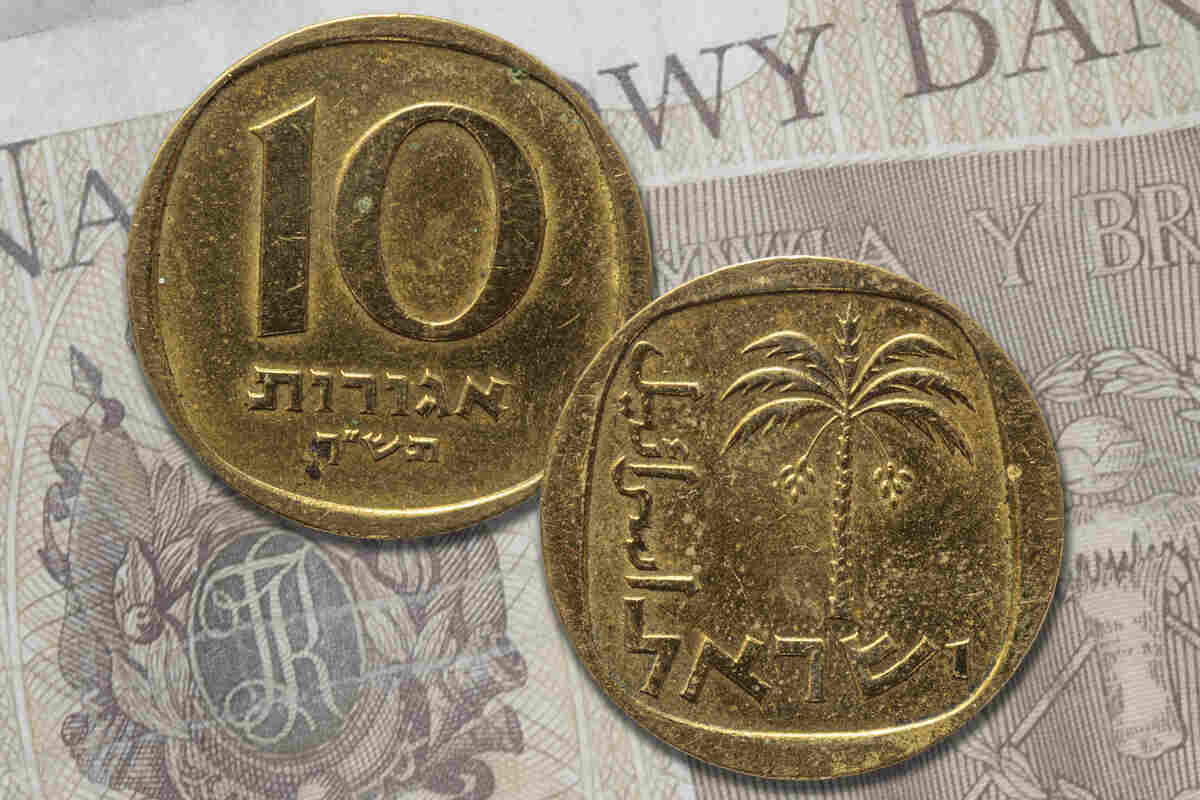The Full Guide to Israeli Currency
The Israeli Shekel (ILS) is an adaptable and robust currency that has a long history and is essential to Israel's economic and cultural life. In this comprehensive guide, we'll delve into the Israeli shekel, exploring its history, denominations, features, and much more.
The History of the Israeli Shekel
The name "shekel" has ancient roots, dating back to biblical times. It's derived from the Hebrew word which means "to weigh." Fast forward to the modern era, and the shekel has evolved significantly. The currency underwent several transformations before arriving at its current form. Let's take a brief look at its historical journey:
Israeli Pound (1952-1980)
The Israeli pound, also known as the "lira" in Hebrew, was Israel's official currency from June 1952 until February 1980, when the shekel replaced it in February 1980. The previous pegging of the Israeli pound to the British pound was abandoned in 1954, and in 1960, the subunit of the Israeli pound changed from 1,000 prutot to 100 agorot.
In the 1960s, there was a debate about the name of the Israeli currency because "lira" was a Latin loanword and not of Hebrew origin. This debate led to a law that required the Minister of Finance to change the currency's name from "lira" to the Hebrew word "shekel." The law gave the minister the authority to choose the date for this change. The shift occurred in February 1980, when the Israeli government created the "Israeli shekel," now known as the "old Israeli shekel."
Ready to buy?
Are you ready to buy your currency? Stop waiting and request a Shipping Kit. We will provide everything you need to ship and receive funds for currencies you own.
Shekel (1980-1985)
In 1980, the original shekel, commonly known as the old shekel, was introduced. During the 1960s and 1970s, it was frequently devalued against international currencies. Hyperinflation in the early 1980s prompted the introduction of the new shekel.
New Shekel (1985-present)
The new shekel was introduced in 1986, at a rate of 1,000 old shekels to 1 new shekel. Since its introduction, the Israeli government and the Bank of Israel have implemented careful fiscal and monetary policies and various market-based economic reforms to ensure the stability and strength of the currency.
The symbol for the new shekel is ₪, created by combining the first Hebrew letters of “shekel” (ש) and “ẖadash” (ח) for “new.” When the shekel sign is not accessible, the abbreviations NIS or ILS are used instead.

The Current Exchange Rate of the Israeli Shekel
Fluctuations are possible, but as of October 2023, the exchange rate for the Israeli shekel to the US dollar stands at 3.85 ILS to 1 USD. It's always a good idea to check with a reliable financial source or currency converter for the most up-to-date rates if you plan to exchange currency or engage in financial transactions involving different currencies.
Stability and Strength of the Israeli Shekel
Since the economic crisis of the 1980s, Israel has maintained conservative fiscal and monetary policies. The country has also invested heavily in its industrial and scientific sectors, contributing to its economic stability and competitiveness.
Israeli Shekel is Freely Convertible
On January 1, 2003, the Israeli new shekel became a freely exchangeable currency. This means that it can be easily traded in the global foreign exchange market, and people in different parts of the world can use it for transactions.
From May 7, 2006, new shekel derivative trading has been available on the Chicago Mercantile Exchange, further enhancing the currency's global presence and accessibility. On May 26, 2008, CLS Bank International decided to handle payments using the new shekel, which means that the currency became fully exchangeable.
Coins of the Israeli Shekel
While banknotes are essential for larger transactions, coins play a significant role in everyday commerce. Israel has introduced a range of coin denominations over the years, each with unique characteristics. Here's an overview of Israeli coins currently in use:
- 10 Agorot Coin: Features a menorah symbol, symbolizing Jewish history and tradition.
- 0.5 Shekel (½ Shekel) Coin: Showcases a lyre considered a national instrument of Israel.
- 1 Shekel Coin: Displays a lily and "Yehud" (Judea), connecting to the historical and biblical roots.
- 2 Shekel Coin: Features two horns and a pomegranate.
- 5 Shekel Coin: Depicts a column capital from archaeological sites, reflecting Israel's history.
- 10 Shekel Coin: Forged from two metals to make it extremely difficult to counterfeit and ensure its security. It also showcases a palm tree, dates, and "for the redemption of Zion" in Hebrew. It holds the highest value among the coins, equivalent to half of a 20 shekel bill.
These designs draw inspiration from symbols on ancient Jewish coins, connecting Israel's modern currency to its historical and cultural roots. Meanwhile, the banknotes feature figures from contemporary Israeli history, offering a comprehensive view of the nation's heritage.

Banknotes of the Israeli Shekel
Often more convenient for larger transactions, banknotes showcase significant aspects of Israeli culture and history. The most recent series, or series C, of banknotes, was introduced in stages. The ₪50 note was the first to begin circulation on September 16, 2014.
The ₪200 note followed on December 23, 2015. Finally, the ₪20 and ₪100 notes were issued on November 23, 2017, completing the "Series C" banknote series.
Israeli new shekel (ILS) banknotes feature prominent Hebrew poets who have significantly contributed to Israel's culture, and society. Here are the figures featured on Israeli banknotes:
1. Rachel Bluwstein
The 20 new shekels note features Rachel Bluwstein, an iconic Israeli poetess celebrated for her lyrical poetry that captures the beauty of the land of Israel. Her verses resonate with themes of nature, love, and the connection between the Jewish people and their homeland.
2. Shaul Tchernichovsky
Shaul Tchernichovsky graces the 50 new shekels note, honoring his legacy as a prolific poet and doctor. His poetry reflects a deep appreciation for the natural world, and his verses often touch on themes of love, humanism, and the Jewish experience.
3. Leah Goldberg
The 100 new shekels note pays tribute to Leah Goldberg, a multifaceted writer, poet, and translator. Her talents span various genres, including poetry, prose, and children's literature. Goldberg's work embodies the richness of Hebrew language and culture and continues to be cherished for its depth and creativity.
4. Natan Alterman
Natan Alterman, featured on the 200 new shekels note, was a renowned poet and playwright known for his profound impact on Israeli literature. His writings often carried a patriotic and Zionist fervor, making him a central figure in the cultural life of Israel.
Discover Exotic Currency Trading Online
Interested in trading Israeli currency, as well as other world currencies? US First Exchange offers a user-friendly online platform for buying or selling more than 20 currencies from any device.
We provide:
- Competitive exchange rates.
- A straightforward trading process.
- Various payment methods.
- Even doorstep delivery for physical banknotes.
Whether you want to buy Iraqi dinars, sell Brazilian reals, or deal with major currencies like the euro, we've got you covered.
Join our free exchange rate alert program to track rates and find the best times to trade your preferred currency!
Ready to sell?
Are you ready to sell your currency? Stop waiting and request a Shipping Kit. We will provide everything you need to ship and receive funds for currencies you own.


